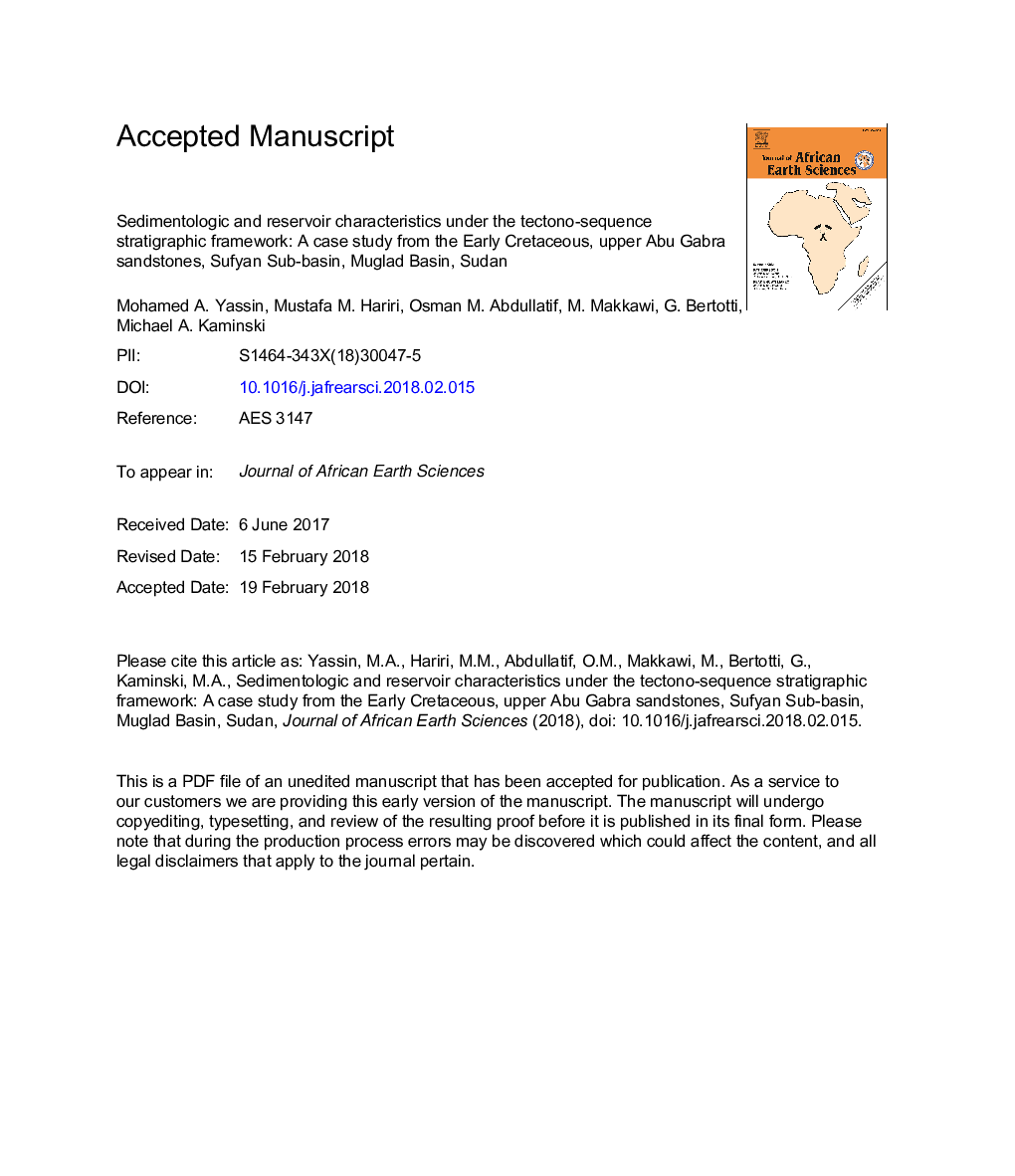| Article ID | Journal | Published Year | Pages | File Type |
|---|---|---|---|---|
| 8913490 | Journal of African Earth Sciences | 2018 | 44 Pages |
Abstract
The Sufyan Sub-basin is an east-west trending Sub-basin located in the northwestern part of the Muglad Basin, in the eastern extension of the West and Central Africa Rift System (WCARS). Exploration results showed the occurrence of accumulations of hydrocarbon. The source rock for these hydrocarbons is believed to be the lacustrine shale of the Abu Gabra Formation. Fluvio-deltaic sandstones within the Abu Gabra Formation represent the primary reservoir. Depositional and post-depositional processes influence reservoir heterogeneity, quality, and architecture. This study investigates different scales of reservoir heterogeneities from basin to micro scale and discusses the impact of depositional facies and diagenesis on reservoir quality. Approaches include seismic interpretation, seismic attribute analysis, well log analysis, thin sections and scanning electron microscope (SEM) investigations, and X-ray diffraction (XRD) analysis of the Abu Gabra Formation. Sedimentologic interpretation in this study was performed based on core cuttings, well logs, and seismic data. Subsurface facies analysis was analyzed based on the description of six conventional cores from two wells. Seven lithofacies in Abu Gabra Formation are identified. Four types of depositional systems are identified in the studied succession. These are braided delta, fan delta, sublacustrine fan, and lacustrine systems. The sandstone is medium to coarse-grained, poorly to moderately sorted and sub-angular to sub-rounded, sub-feldspathic arenite to quartz arenite. At the basin scale, the Abu Gabra Formation showed different sandstone bodies thickness, geometry, and architecture and are ascribed to different depositional systems. At macro and meso-scales, reservoir quality varies within the Abu Gabra reservoir where it shows progressive coarsening upward tendencies with different degrees of connectivity. The upper part of the reservoir is well connected with amalgamated sandstone bodies, however, the middle to lower parts have moderate to low sandstone body connectivity and amalgamation. At a micro-scale, sandstone reservoir quality is directly affected by texture and diagenesis. The XRD and SEM analyses show that kaolinite and chlorite clay are the common clay minerals in the studied samples. Clay matrix and quartz overgrowth have significantly reduced the reservoir porosity and permeability, while the dissolution of feldspars during the diagenetic process increase it. The estimated porosity in Abu Gabra Formation ranges from 5 to 21% with an average of 13%; while permeability varies from 0.22 to 732 mD with an average of 240 mD. The results of this study contribute to a better understanding of reservoir heterogeneities and help in reservoir quality prediction, therefore enhancing the hydrocarbon productivity.
Related Topics
Physical Sciences and Engineering
Earth and Planetary Sciences
Geology
Authors
Mohamed A. Yassin, Mustafa M. Hariri, Osman M. Abdullatif, M. Makkawi, G. Bertotti, Michael A. Kaminski,
